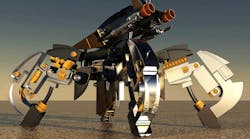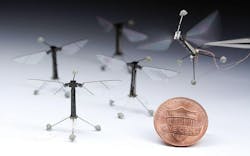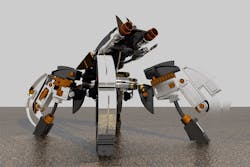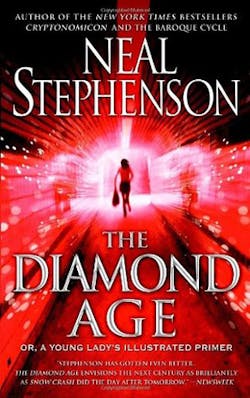Technologies that aren’t here yet, but we can see coming—like nuclear fusion, room-temperature superconductivity, and artificial intelligence (AI)—promise to change the world. One lesser-known tech that’s coming, however, is micro robotics, or microbotics. As the name suggests, these robots are at the micro scale, around a millimeter or less in length.
Devices that can be classified as primitive microbots already exist, but they make it under that designation just barely. Current microbots, like the microdoctors designed at the Swiss Federal Institute of Technology in Zurich, rely on a combination of material selection and geometry along with externally applied forces to operate. They do not have provisions to independently sense and make decisions about their environment. That said, they are the nascent versions of what is to come.
Many of the precursors of microbotic tech have already made it into our lives. Our smartphones and tablets have, almost to the last, a gyroscope that operates on MEMS principles. It is the research in MEMS and nanoscale machinery that will bring us micro- and eventually nano-sized automata.
The revolution will come when these devices reach a sufficiently low cost and a high level of sophistication—i.e., when sensors, processing power, a mode of locomotion, and a method of storing or harvesting energy are combined. As research in MEMS and nanotechnology inexorably progresses, this will happen, and micro-sized robots will make the transition from conceptual curiosities to fully realized parts of our lives.
We can expect to see medical robots that will map our unique physiologies, clean the plaque out of arteries, and destroy kidney stones. They will help diagnose and combat disease and be used to fight cancer. Microbots will monitor and maybe even repair machinery and infrastructure. They will also become another tool for manufacturing. A book (a thick one, at that) could be written attempting to predict the benefits that microbotics will bring. But what about where this tech could go wrong or be abused? Another book equal in size to the first could be written on that subject.
What effect will legions of nearly invisible robots have on our privacy? Will they close the gap between the part of our lives that is logged and recorded and that final bit left to us? They may be exactly what our neighbors, or employers, or the powers-that-be use to take the last of our privacy. Every time you leave work, you could be carrying an army of microscopic voyeurs. Just see what a swarm of bots can do right now in the video below:
Microbots will change warfare. They can be used to attack an enemy’s weapons and equipment and the manufacturing facilities that produce munitions. They will almost certainly be used to attack the enemies themselves in some capacity. Even if they aren’t used to kill, they may be used to disrupt an enemy’s biology enough to reduce their effectiveness. Microbotics used for warfare may end up being classified as a kind of weapon of mass destruction.
In Neal Stephenson’s book The Diamond Age, nations and other well-resourced entities would quietly engage in warfare with each other via countless hosts of tiny robots. The actual perpetrators of these micro wars were not usually known, and the carcasses of the machines would collect like “printer toner” in the streets. Should only a fraction of Stephenson’s prognostication come to pass, what are the potential health and environmental impacts of this type of conflict?
Like any technology, once the fundamentals are well understood and have been put into widescale use, the technology and the means to create it will become cheaper and easier to obtain. Ultimately, this may put a technology as destructive as any chemical or biological weapon within easy reach of the type of people who want to inflict indiscriminate harm.
Microbotics is like AI in that we can see it looming in the distance. And also like AI, it has just as much potential for good as it does for bad—as much potential for destruction as it does for hope. Dynamite, the gun, the airplane…each of these creations pushed back the dark and vouchsafed us a little bit more against an uncaring universe. We will have to be careful because while these things were being used to push back the wilderness, to make the world smaller, and to change the course of rivers, they also gave us ways to inflict death on a scale and with an ease never before seen.
If the notion of micro robots invading every aspect of our lives seems a bit far-fetched, let me tell you about the time I read Bruce Sterling’s novel Distraction. It is a near-future science fiction story in which the protagonist uses a handheld computer that takes voice commands, stores phone numbers, and provides directions. When I read it back in 2000, this portable computer that had such ready access to phone numbers and maps seemed a bit too ambitious for near-future tech. And yet, I’m now very firmly attached to my smartphone, which does everything Sterling predicted and more.
What seemed so fantastical a few decades ago is now so firmly part of our reality that we take it for granted. It won’t happen tomorrow, but the day will come when microbots are as integral to our lives as our cell phones are now. We will have to tread very carefully when the time comes.
















